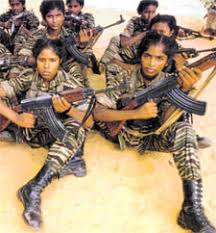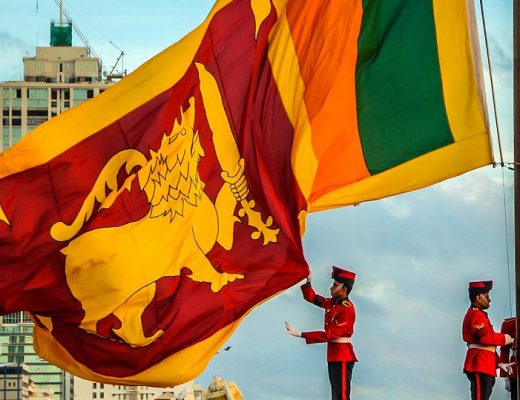After Sri Wickrema Rajasinghe became the King of Senkadagala, there were many conflicts in the reign
between the elite of the society and the people because, in 1802, that area controlled by the British in the
Puttalam district, some traders were ill-treated and bashed by the Sinhala vandals and taking their
belongings as instructed by Pilima Thalawe Adikaram. When Governor North learned about it, the King
wanted to compensate the victims. Still, it did not happen due to the influence exerted by Pilima Thalawe
Adikaram. When the British heard about it, they were furious. The British sent, on 31 January 1803, with
Commander McDowall, a regiment comprising 2000 soldiers through Colonel Barboot (from unit 51-19),
to declare war in Kandy. When the King heard about it, he abandoned Kandy and went to a safe hideout,
thus emptying Kandy town with his people. This made the British occupy several villagers in Kandy and
erect Forts in the various cities.
Also, the British installed Prince Muthuswamy, who was in a hiding place in Jaffna, brought him to
Kandy and appointed him as the King of Kandy. Once this was done, the British wasted no more in
exchanging an agreement to retain a troop of soldiers in Kandy and with the promise to hand over to the
British and Kiriga village and Galagedra to build Forts and to allocate and to release land to make a road
between Colombo and Trincomalee to transport Cinnamon; also, to pay a salary to King Sri Wickrema
Rajasinghe, as compensation – free of charge (pin padi). And to hand over Vanni to Muttu Swami.
But unexpectedly, Sinhalese, who fought with the British, agreed to hand over to Pilimatahalwa
Adikaram Vanni region that belonged to the British and to pay a salary of $30,000. The agreement
consisted of Pilima Thalawe Adikaram ruling Prince Utum, reigning in Kandy, and applying areca nut
(Amunu) 20,000 to the British. This made the British occupy several villagers in Kandy and erect Forts in
the various cities. Also, the British installed Prince Muthuswamy. Once this was done, the British wasted
no more time but exchanged an agreement to retain a troop of soldiers in Kandy and Sathara Korale with
the promise to hand over to the British and Kiriga village and Galagedra to build Forts and to allocate
land to make a road between Colombo and Trincomalee to transport Cinnamon and to pay a salary to
King Sri Wickrema Rajasinghe as compensation – free of charge (pin padi). And to hand over Vanni to
Muttu Swami. And accept Prince Utum as the ruler of Kandy.
In another turn, two commissioners from Meegastenna and Denagamuwa were sent by Andrews as
Ambassadors to Madras. In Madras, he proposed an agreement in connection with Ceylon containing 13
pages. Some of them were to market products without Customs Duties to berth up to ten ships, to areas
that did not have any disturbances in the areas that belonged to the King and to return to the King’s land
that the Dutch acquired. The agreement also agreed with Pilima Thalawe Adikaram on those who were
bashed and to pay compensation annually to Prince Muttu Swami to pay yearly $30,000, and requested
Pilima Thalawe Adikaram to appoint Prince Utum as King of Kandy and also to supply 20,000 erca nuts
(Amunu) annually. After that, on February 8, the British conquered Ganethenna; at this juncture,
Molligoda Adikaram reached in a procession, and he surrendered to the British the flag of the Sathara
Korale flag with all official documentation. Meanwhile, the King left Kandy, and on the same day, the
Thun Korale (Satara Korale and a Korale and Sabaragamuwa surrendered to the British in an official
notice.
Ceylonese King had passed Theldeniya and was heading towards a hiding place in Central Kandy, who
was after the King knew about it. Due to darkness and rain, people could not correctly identify the
Bomura Arachchiralage house. Later, people surrounded the hiding house and demanded that to throw all
the firearms outside and enter by breaking the back door of the hideout. On 18 February, all were taken
into custody. Ceylonese fought back, and The King became powerful again; the agreement became null
and void, and the British had to retreat. After some time, the Senkadagala reign was handed over to the
Colonials through a contract.
In March 1815, there was a meeting of the society’s elite where Governor McDowall’s with statement
contained 12. On behalf of Sinhala, Adikaram, it was read. Accordingly, on March 1 st , John Doyle’s
statement of 12 pages was read and agreed upon. The King of England, King George the 3 rd, placed his
signature on behalf of Sinhala Adikarms for Brownrig, the Governor. After that, on 23 March 1815, the
whole of Ceylon became part of the British Empire.
In the 1815 Historic Agreement
On 15 March 1815, Britain and Ireland agreed came to govern Ceylon following Great King George
King the 3 rd on include including, the First Governor Robert Brownrig ,on one side and the other on
behalf of the Sinhala People, commissioners, including main Mohottalas, Koralalas and other headmen.
However, when there was a complaint without any investigation of what was done wrong, and even a
statement that they acted in an autocratic fashion and treated people mercilessly and denied even
death threats to the extent that all people resisted King Sri Wickrema Rajasinghe.
They sang “God Save the King” – signed by J. Doyle ( British government’s Chief Translator)
Robert Brownrig. The agreement was signed by:
- Adikaram & Sath Korale Disswa (Division) – Ahalepola
- Adikaram and Sabragamuwa Dissawa – Molligoada.
- Satara Korale Dissawa – Plilimathalwe.
- Uva Dissawa – Monarawila.
- Matale Dissawa – Ratwatte.
- Thun Korale Dissawa – Molligoda.
- Walapane Disswa – Dullave.
- Wellasee & Binthanna Disswa – Millawa.
- Thamankada Disswa – Galagama.
10. Kandy (Nuwara) Kalaviye Dissawa – Galagoda
True copy -James Southerland Sinhale – Divisional Responsible Secretary.
Courtesy: The writer translated into English from the text in Sinhalese by the late Prasad Milinda
Siriwardena, “Ceylon Economic Analysis between BC 543 to 1832.” Only relevant parts were taken
into consideration.






